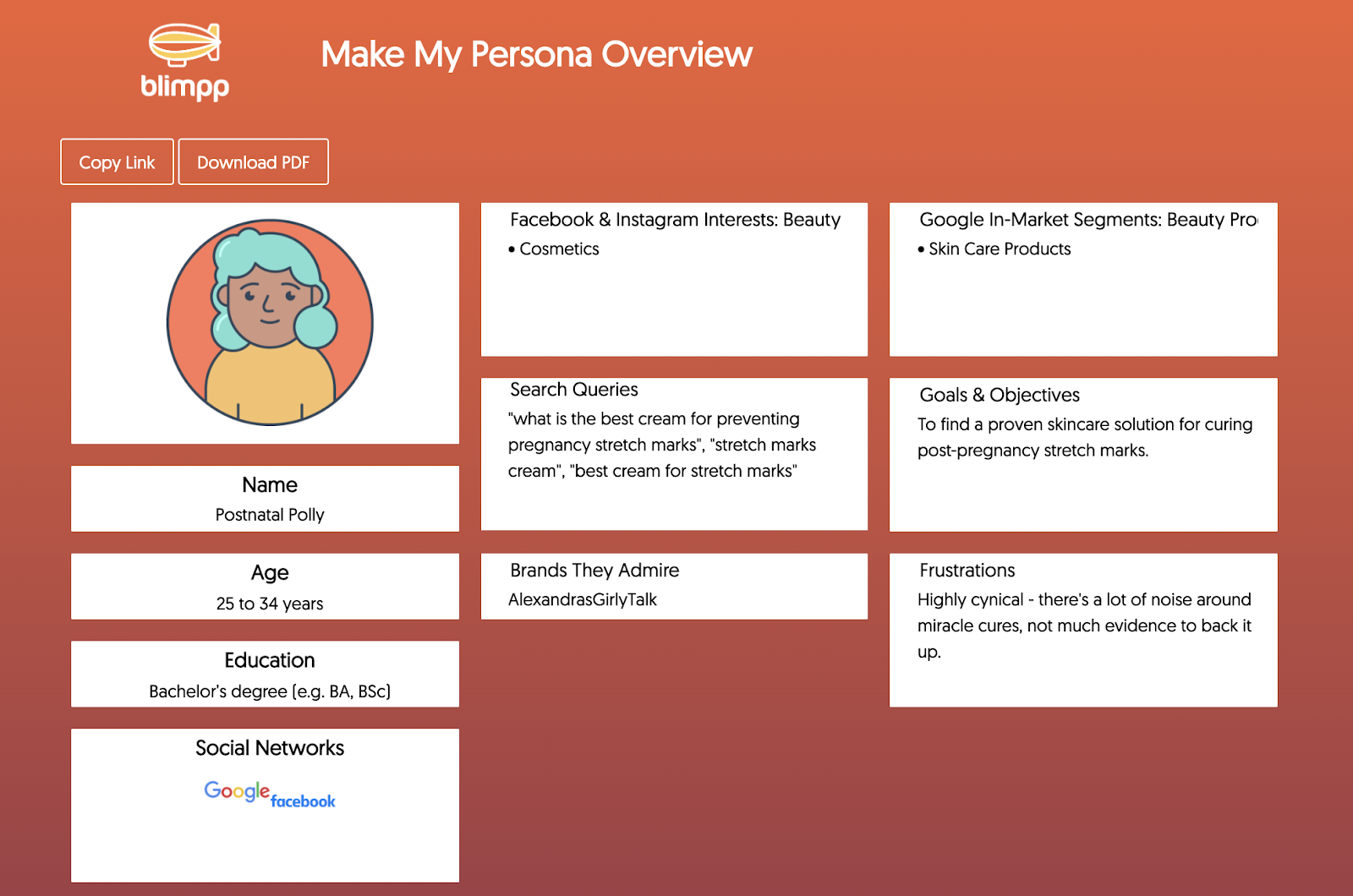Whether you’re a startup eCommerce brand or an established one looking to scale into new markets, understanding your target audience is just about the most important thing you need to think about during the campaign planning process. Relevancy is everything in marketing, and by being laser targeted on who you’re talking to, you’ll impact every possible metric – in particular engagement and conversion metrics.
An eCommerce customer persona – also known as a buyer persona – is essentially a document that contains fictional avatars of your ideal customers. They describe your customers’ needs, preferences, motivations, amongst other things and can be used to inform ad targeting, content marketing, and even product development. You might have seen the words audiences and personas used pretty interchangeably in marketing.
The distinction here is that:
- Personas are an illustration of your ideal customer. They’re a useful starting point for coming up with ideas around targeting, ad creative etc. as they provide an overview of your target customer. For example, if you’re working with several agencies across different channel workstreams, having a centralised view of who you’re actually looking to target can ensure greater alignment and integration across your performance marketing, email marketing, SEO, and website content.
- Audiences are the groups of people that we can target on ad platforms like Google and Facebook, based on demographics and interests. For example, we can target people that like interior design as an affinity audience in Google, based on things like their search history and the websites they visit most often.
Personas and audiences are interlinked. You create the persona first, which then feeds into how you would target them – audiences – across ad platforms.
Regardless of the type of business you have, its size or scope, you need to create at least three customer personas to guide your marketing efforts. Sure, you can skip this step, but your targeting will be overly broad, your messaging will be loose and the website traffic that you do manage to generate won’t convert as efficiently.
First, let’s take a look at what good looks like.
Sign up to our free Google Ads email course.
7 days, 7 lessons. Everything from how to structure your Google Smart Shopping campaigns to ad testing, and YouTube ads excellence. Sign up and level up your Google Ads eCommerce game.
Crafting good eCommerce customer personas
Let’s assume that we’re creating customer personas for a luxury skincare DTC brand that creates products for anti-aging, dry skin, and conditions such as post-pregnancy stretch marks.
In order to lay the groundwork for your customer persona, you’ll need to first ensure that the persona is based on either quantitative or qualitative data sources. Some of our favourite sources of data include:
- Facebook Audience Insights data
- Google Analytics data
- Google Ads search query data
- Google Trends data
- Ahrefs data
It’s really important that your assumptions on customer personas are based on data and not gut-feeling or anecdotal evidence. Get this wrong, and you’ll end up with customer personas that are out of sync with the pulse of your market.
There are six major components to a customer persona that we’ll be looking to dive into:
- Avatar and Name
- Demographic information
- Interests
- Goals and pain points
- Influencers
- Objections and frictions to purchase
Remember, we’re not interested in assumptions and gut-feel here, we’re looking for a truly data-driven approach to building our personas. This is an important point, as at some point, you’ll need to defend why you’re targeting certain profiles within your broader audience, and having the data in your back pocket is a sure-fire way to build credibility and buy-in across the business.
Avatar and Name
Start by choosing a name and avatar to bring your persona to life. This will help to get you thinking about the needs, wants, and interests of your persona. Consider naming your customer persona with their core problem in mind to make it easier to remember.
For example, our luxury skincare brand wants to focus on a number of segments, one of which is women who have recently had a baby. Our customer persona to align with this group is called “Postnatal Polly”, who is looking for a robust solution to postpartum skin problems, such as stretch marks and excessively dry skin.

Using Facebook Audience Insights to uncover demographic information
Understanding the demography of your customer persona allows you to paint a clearer, more personal picture. Factors such as age and education can help you to tailor your marketing channels and message to suit your target audience, ensuring that it resonates.
Facebook Audience Insights can be a good source of data here, as it looks at trends around Facebook users based on what content they engage with on the social networking platform. For example, we can see that people based in the UK, who are interested in ‘Pregnancy’ and ‘Skincare’ tend to be women, with the highest concentration of this group (31%) in the ‘25-34’ age group. We can also take into account other demographic insights such as relationship status and education level, if relevant:
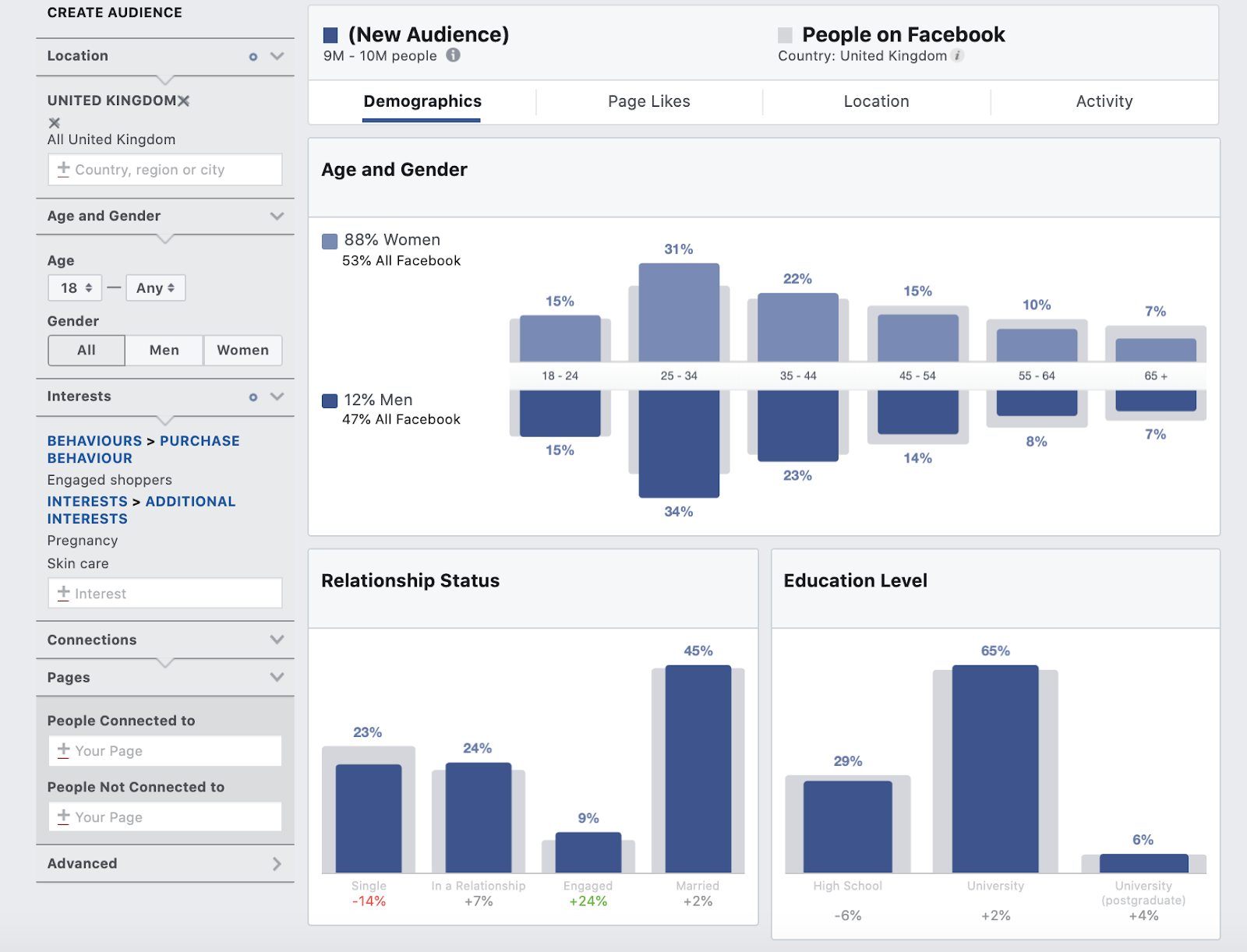
Using Google Analytics to uncover interests and in-market insights
Understanding exactly where you can find your target audience online opens up opportunities for targeting. For example, we can target people by interests in Facebook and Instagram, and also overlay interest-orientated targeting over Google search, display, and YouTube campaigns via affinity, in-market, and combined audiences.
There are several ways to uncover the precise interests of your target audience. When you set up a campaign within Facebook Ads for example, there are a few targetable interest categories that you can use, however these tend to be quite broad and expensive, given that the same ‘default’ interest categories are shown to multiple advertisers. Instead, use the blimpp eCommerce Customer Persona generator to explore the comprehensive list of targetable Facebook audiences, including those ‘hidden’ within the Facebook Ads UI.
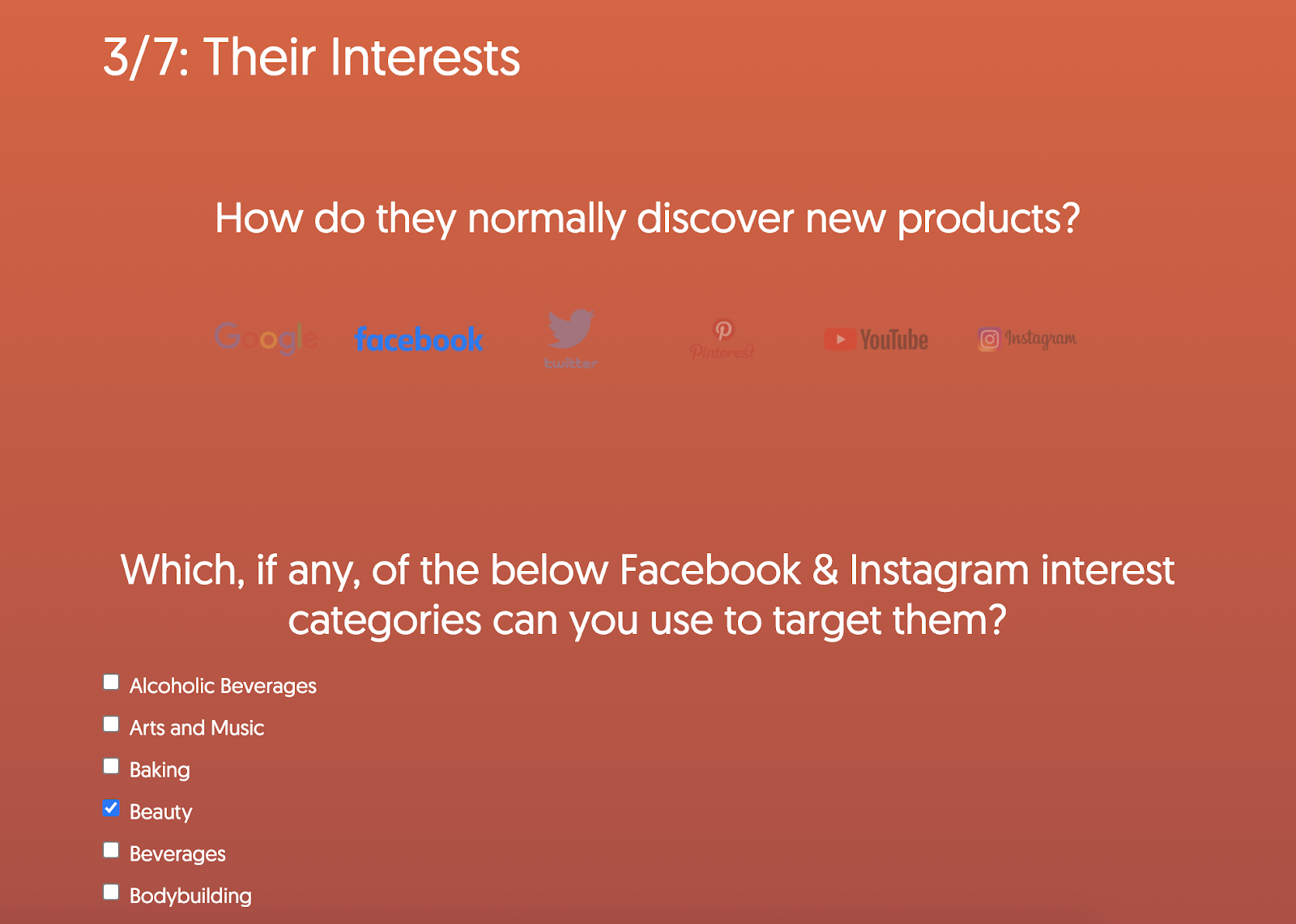
You could also tap into the power of Google Analytics to uncover interest-driven insights based on your website visitors. Navigate to ‘Audiences > Interests > In-Market Segments’ to see what in-market audience categories apply for your traffic:
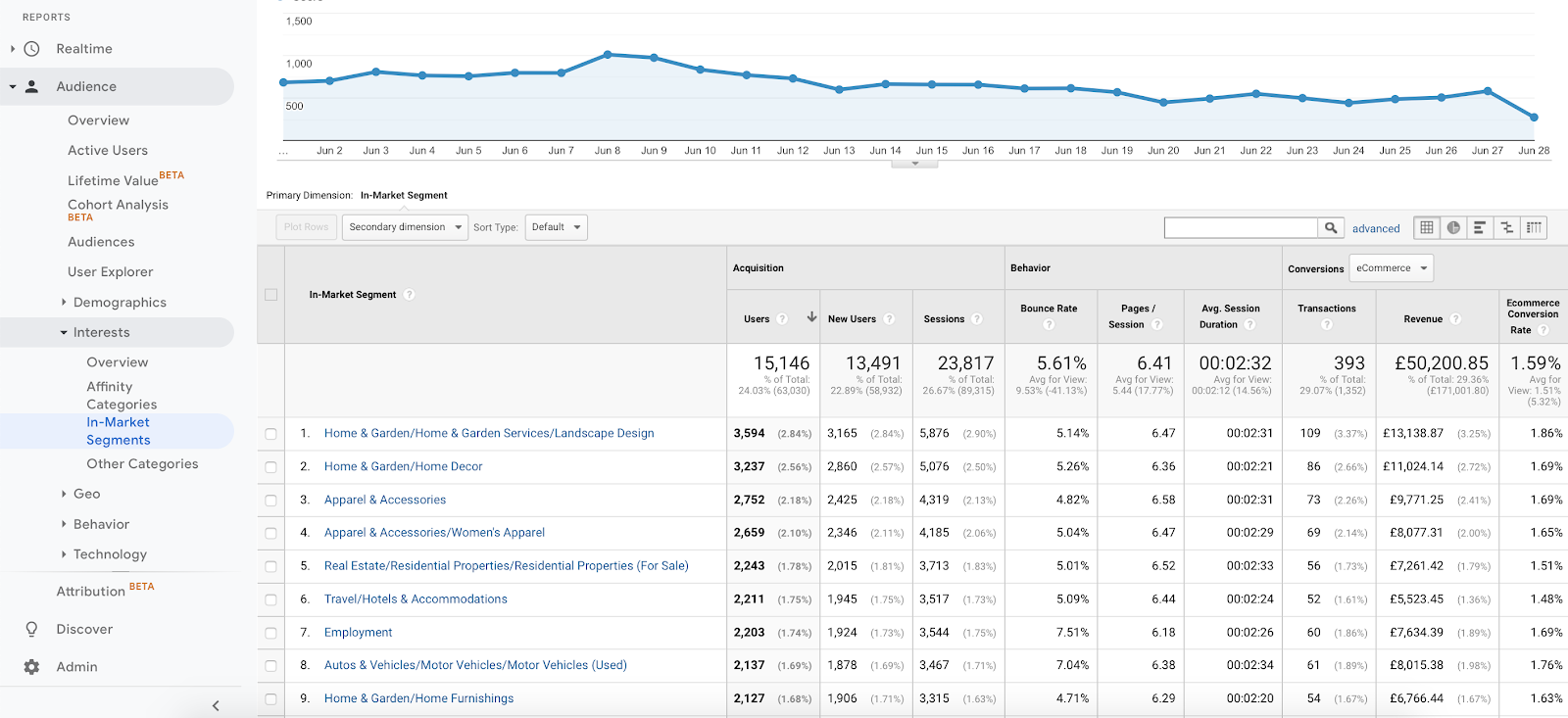
An in-market audience is simply a collection of people that are ‘in-market’ for a specific product or service, taking into account their search behavior, the content of the websites that they’re visiting on the Google Display Network, and the videos they’re consuming on YouTube.
Make these insights as relevant as possible to your customer persona by applying segments on top of the data. For example, we previously identified the female, 25-34 audience as a relevant customer segment, and we can use that information to laser-target precise in-market categories by selecting the ‘+ Add Segment’ option at the top of the page, and selecting ‘New Segment > Demographics’:

Once you save this segment, you can then begin to rank different in-market audiences by conversion rate, which you can then use to inform your customer persona:

Bringing it back to your customer persona, you can apply the top in-market audience categories to your avatar to help inform your future targeting. Here’s, what that looks like within our eCommerce Customer Persona generator tool:
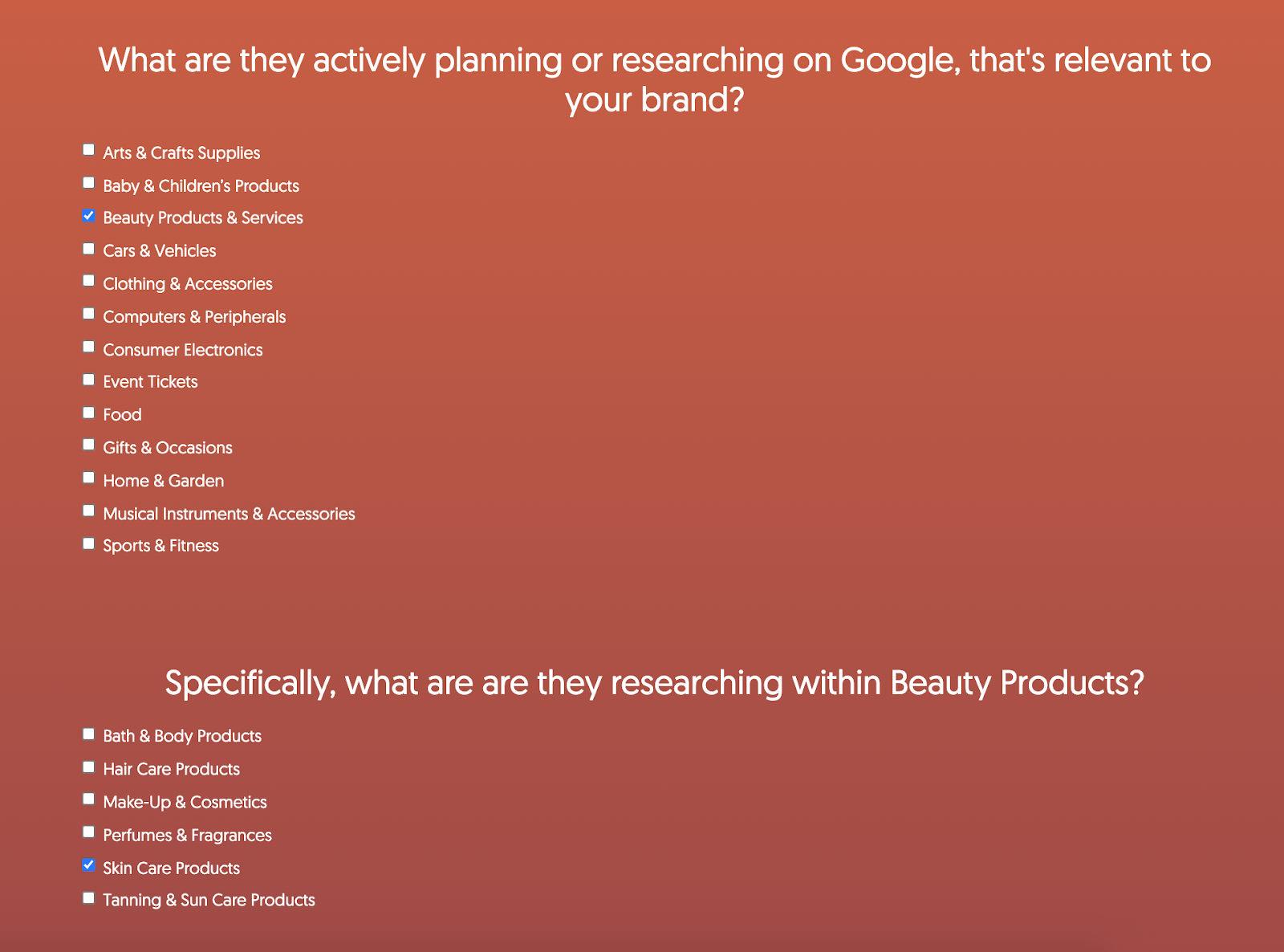
Be sure to select only the most prominent channels for your target audience, as each has several layers of targeting available. For most DTC brands, Facebook and Google will be key channels, but also remember that Twitter and Pinterest can also provide rich interest targeting options and should also be considered.
Analyse customer pain points and goals with search query data
Understanding what your target audience is looking to achieve by using a product like yours is key to marketing of course, but also relevant to other aspects of an eCommerce business such as product management and customer service.
To get closer to specific customer pain points, you could look at several sources including Google Trends, Google Ads search query report, and Ahrefs keyword explorer tool. Google Trends is a great resource for looking at broader macro-trends, such as interests over time, which is useful if comparing search term performance:
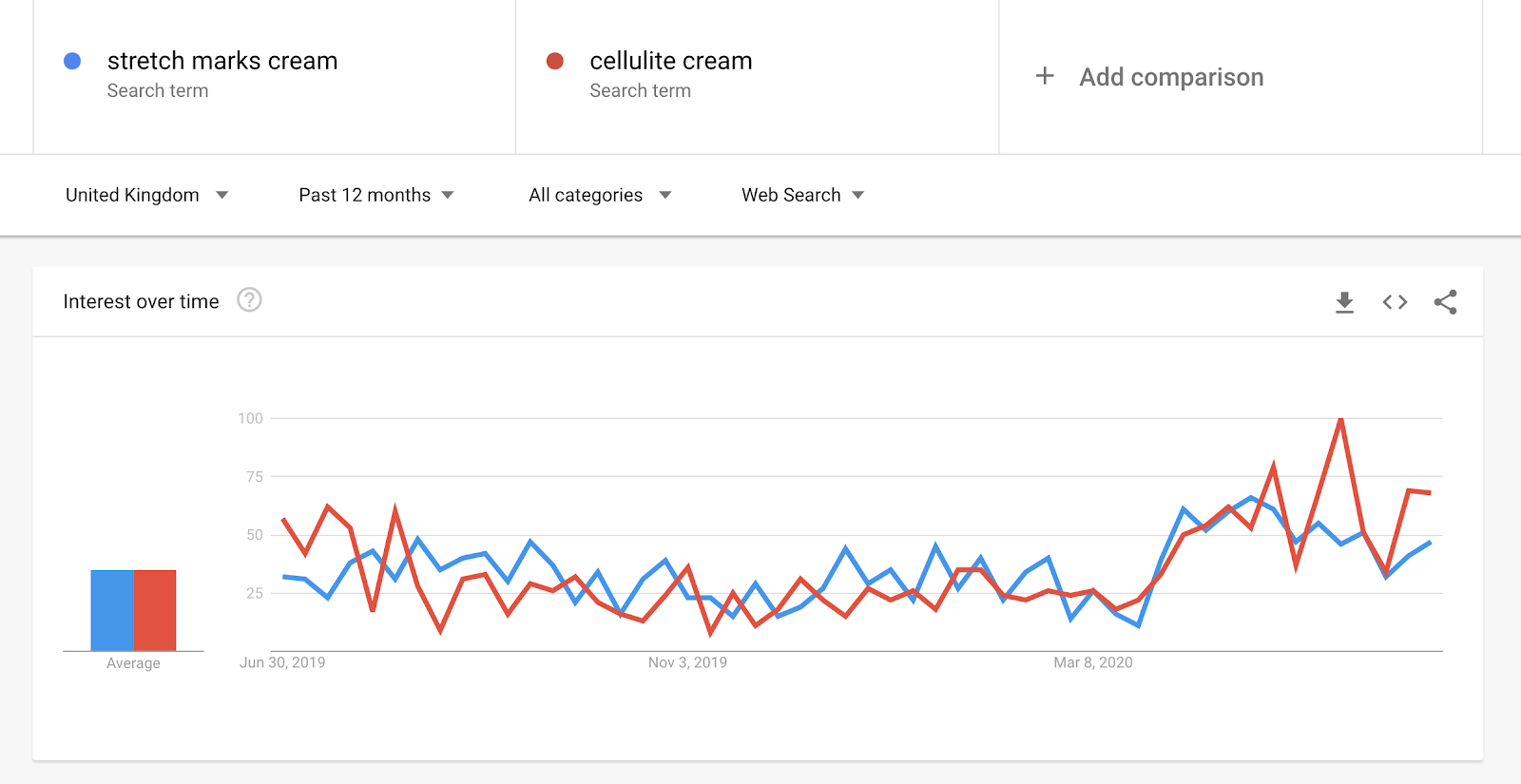
However, if you’re looking to truly get into the mind of your customer, then you can’t beat the Google Ads search query report, which details all of the different search queries your Google Ads keywords have triggered over time. This is useful as you can then identify queries which align with specific pain points. The downside to this report is that its usefulness is generally aligned to how well structured your Google Ads campaigns are, therefore it may take you hours to find search queries that focus on specific pain points.
The other downside to the search query report is that it will only show data if your ads were serving during a given period. Outside of that, you won’t see any data at all, which is why you might want to consider analysing the keyword explorer tool within Ahrefs instead. Like the search query report, it’s focused on search data, however the key difference is that it’s based on a broader number of searches. Food example, here’s an overview of popular search terms related to ‘stretch marks cream’, together with search volume estimates:
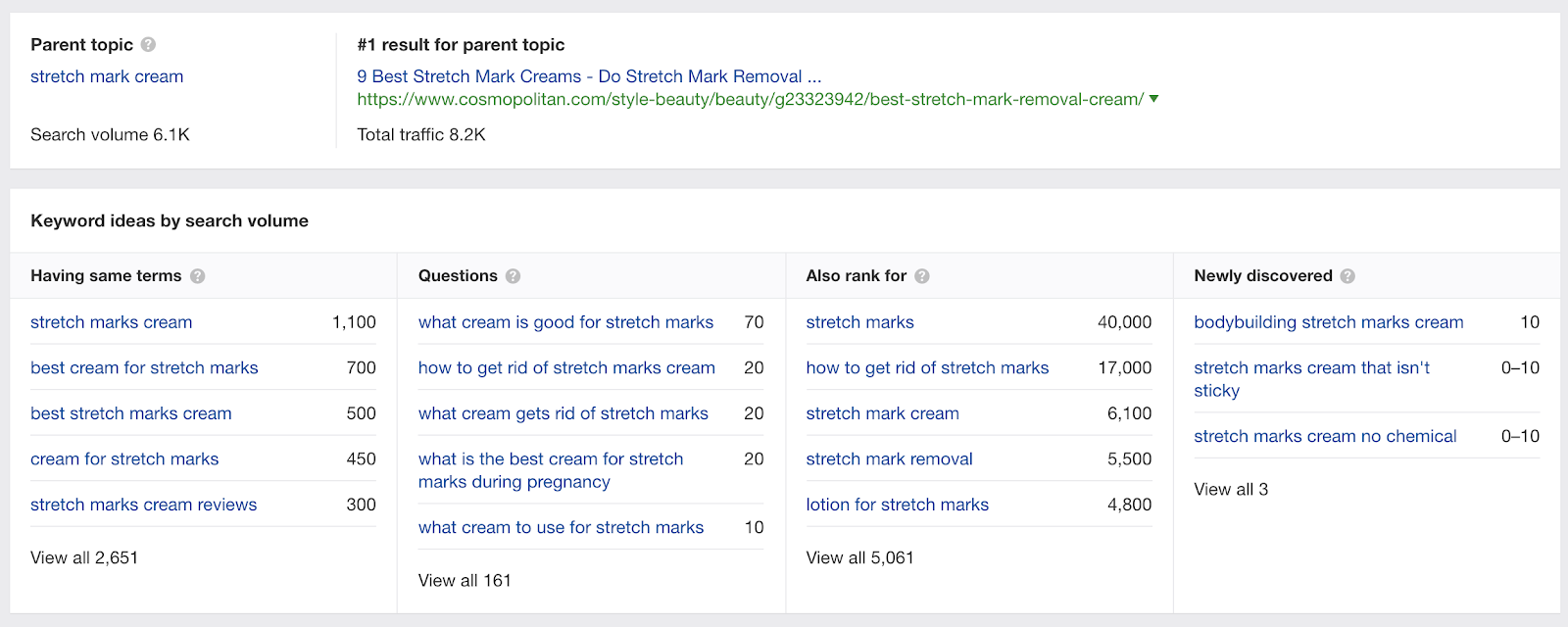
This information will be particularly useful when bringing together a customer persona, as it’s based on actual searches, and is indicative of real-life paint points (in particular, question-based searches). You can then use that data as part of your customer avatar, in order to build out keyword campaigns down the line.
Uncovering potential influencers with Ahrefs content explorer and YouTube search
The customer journey can be a complex process, and understanding where your target customers are likely to seek information online before they purchase will help to define your broader influencer strategy.
Once again, Ahrefs is a good source of data here, with its content explorer tool. Not only does it allow you to search for popular content around specific themes, but also identifies the top authors of content based on metrics like traffic and followers. Below is an example of that in action for authors specific to the subject area of ‘stretch marks cream’:

Not only can you use this to approach these authors directly, but you can also target their websites with ads, if they’re on the Google Display Network.
You can also look at using YouTube’s search function in much the same fashion, again leveraging relevant influencers directly, or via ads with Google Ads video campaigns:

Using Google Analytics data to uncover objections and frictions to conversion
Finally, we’ll need to think about all of the different reasons why your target customer wouldn’t buy. For example, we can use the ‘Site Content > Landing Pages’ report to identify landing page performance across campaigns. Again, you’d want to segment your website visitors to align with your target customer persona, by selecting the ‘+Add Segment’ option from the top of the page:
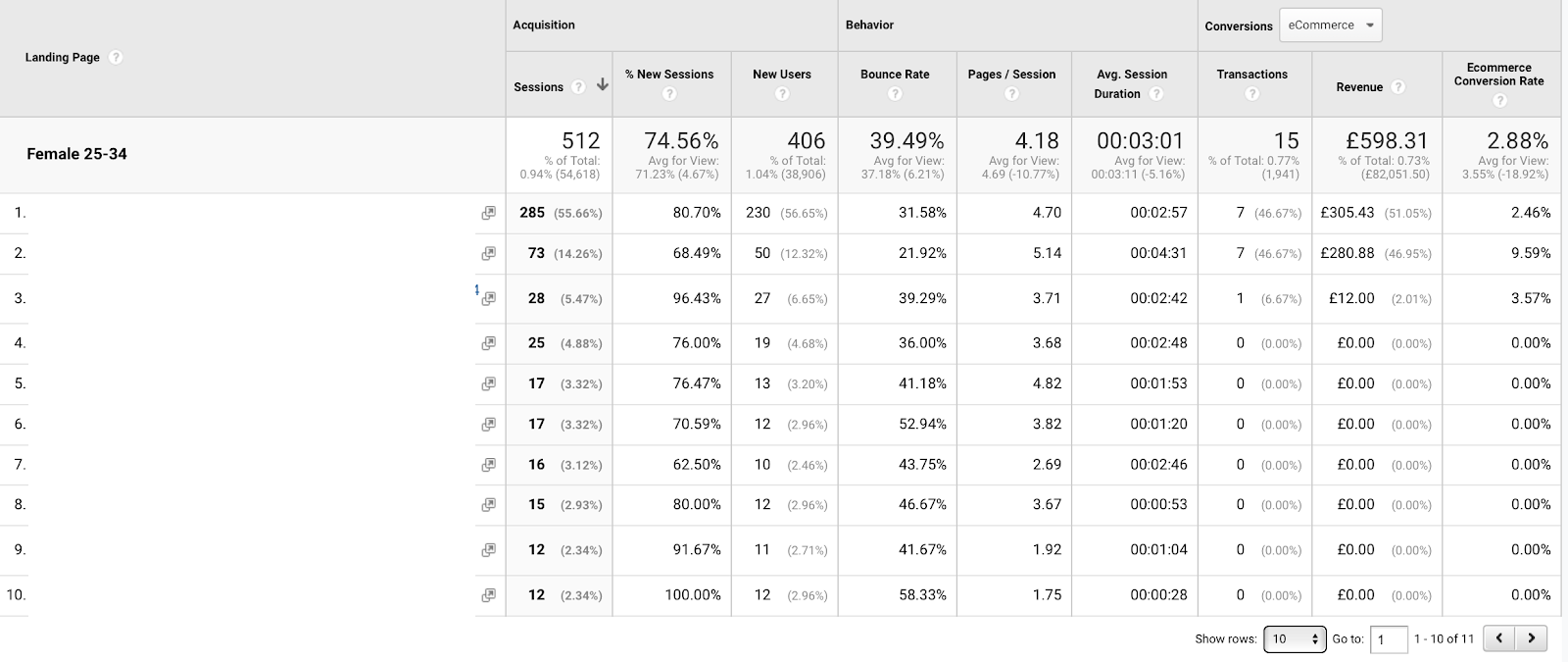
In itself, this data doesn’t tell us much about actual objections or frictions to purchase, but it begins to gather meaning once we start multi-variant testing across landing pages. For example, you might create several landing page variants for the same product based around themes such as value, social proof, emotive language, and factual language. Once you start to compare the performance of each, you can then build a robust idea as to what works and what doesn’t.
For our “Postnatal Polly” customer persona, we might find that landing pages around a factual, science-based theme, outperforms the other variants. One can then deduce from this that a lack of ‘proof’ that a product works is a valid objection that could put someone off buying our product, and so we’d need to counter that with an evidence-based approach to our marketing to validate that the product does exactly what it claims to.
When thinking about objections, ask yourself:
- What landing pages can I build to validate some of the assumptions we have around roadblocks to purchase?
- How can we ensure that we’re overcoming these frictions within our overall marketing to this customer segment?
Putting it all together
Now you have an idea of why a data-driven approach to building customer personas is important, and what they should include, why not create one using the blimpp eCommerce Customer Persona tool? Below is a finished example of this for our luxury skincare brand, for the ‘Postnatal Polly” customer persona:
